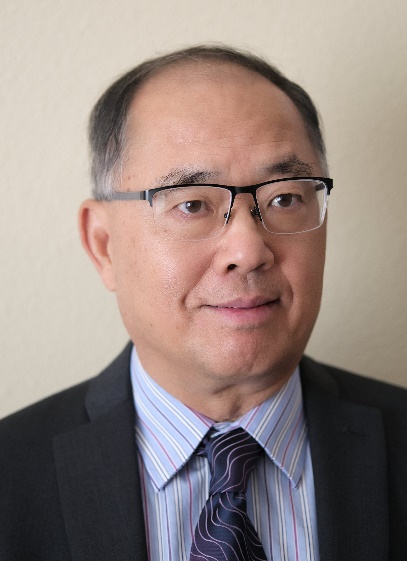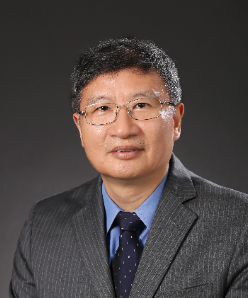 |
Challenges and Possible Solutions for Light Sources in Optoelectronic ChipsCun-Zheng NingCenter for Integrated Optoelectronics, Shenzhen Technology University, Shenzhen, China, and Department of Electronic Engineering, Tsinghua University, Beijing, ChinaAbstract
As optical communications and networks get more complex, integrated, and to ever smaller scales, we are moving ever closer to the future of optoelectronic chips where key components of an optical system are all integrated on a chip, including especially light sources. This talk will discuss some of the most serious challenges for such on-chip light sources including size, energy efficiency, and silicon integration. More specifically, how to make semiconductor lasers smaller than the diffraction limit and more energy-efficient than 10fJ per bit of information transmitted? How to make light sources compatible with Silicon? We will try to show how potential solutions to these grand challenges could be provided by going small or nano. How one could take advantage of nanoscale semiconductor materials and devices to address these issues. The talk will overview progress made in the last 15 years and provide personal perspectives of the future. Specific materials, structures, and devices to be discussed include: 1) nanolasers based on plasmonic or metallic cavities and 2) nanolasers based on 2D transition metal dichalcogenides (TMCs) as optical gain materials for nanolasers.
Biography Cun-Zheng Ning is the Director of Center for Integrated Optoelectronics and a Chair Professor at Shenzhen Technology University. He is also a Professor of Electronic Engineering at Tsinghua University. He was a professor of electrical engineering and affiliate professor in physics and materials science and engineering at Arizona State University. He received his Ph.D. in physics from the University of Stuttgart, Germany, followed by a postdoc at the University of Arizona. He was a senior scientist, nanophotonics group leader, and nanotechnology task manager at NASA Ames Research Centre (1997-2007), ISSP Visiting Professor at the University of Tokyo (2006), Visiting Professor at Technical University of Berlin and Tsinghua University (2013). His research interests include semiconductor optoelectronics including materials, physics, and devices, especially how to transition from fundamental physics and new materials to novel devices. His group was one of the first to demonstrate a plasmonic nanolaser, which was considered by the MIT Technology Review as “the first to overcome the wavelength constraints on the size of lasers”. He invented and demonstrated the first white lasers which won the Top Ten Engineering Inventions of the Year from the US Magazine Popular Science. He was a winner of several awards including NASA and NASA Contractor Awards, NASA Space Act Patent Awards, CSC Technical Excellence Award, IEEE/Photonics Society Distinguished Lecturer Award, and the Alexander von Humboldt Research Award. Dr. Ning is a Fellow of the Optical Society (OSA), IEEE, and the Electromagnetic Academy. The research results of his group have been widely reported on radio, TV, other news media, and tech magazines worldwide.
|
 |
Towards Broadband and Wide-Area Intelligent Optical-Wireless Converged Network for B5G and 6GXiaoping ZhengTsinghua University, Beijing, China Abstract
With the maturity and active deployment of 5G technology, the bandwidth and delay of mobile communication services have made a qualitative leap. However, with the emergence and popularization of new applications such as holographic communication, autonomous driving and high-precision industrial control, it is expected that 5G networks will reach their limits in about a decade. To break through the bottleneck, academia and industry have recently begun to study B5G and 6G technologies, with the goal of realizing the "ubiquitous wireless intelligence" vision by 2030. Optical-wireless converged network technology based on wide-area and full-spectrum perception is becoming a cornerstone of future B5G and 6G networks to meet their stringent requirements for high bandwidth, large coverage, ultra-low latency, while providing unprecedented intelligence and security. This talk will give an overview of the latest development of broadband and wide-area intelligent optical-wireless converged network and introduce some of its key technologies and results.
Biography Xiaoping Zheng was born on 06/Aug/1965 at Jiangsu Province. In 1986, 1991 and 1998, He received his B.S., M.S. and Ph. D from Sun Yat-Sen University, Southeast University and Tsinghua University, respectively. Now He is a professor of Tsinghua University working on optical networks and microwave photonics.
He has authored or co-authored more than 100 papers, obtained more than 40 patents, and 3 prizes from the ministry of education, Beijing government, respectively. He is vice director of Society of Optics, Beijing. |
SUBMISSION
REGISTRATION
CONFERENCE INFORMATION
-
History of ICOCN
-
Plenary Speakers
-
Invited Speakers
-
Committee Chairs
-
Subcommittees
-
Call for Papers
-
ICOCN Awards
-
Technical Program
-
Tracks
-
Important Dates
-
Become a Sponsor
-
Registration Fee
-
Visa Information
-
Travel
-
Hotel
-
Guidlines for Authors
-
Guidelines for Presentation
-
About Shenzhen
-
Social Events
-
Contact us
SHARE THIS CONFERENCE
VISITORS
SEARCH
-
ICOCN'2018 in Zhuhai
-
ICOCN'2017 in Wuzhen
-
ICOCN'2015 in Nanjing
-
ICOCN'2014 in Suzhou
-
ICOCN'2013 in Chengdu
-
ICOCN'2012 in Pattaya
-
ICOCN'2011 in Guangzhou
-
ICOCN'2010 in Nanjing
-
ICOCN'2009 in Beijing
-
ICOCN'2008 in Singapore
-
ICOCN'2007 in Taxila
-
ICOCN'2006 in Jiuzhaigou
-
ICOCN'2005 in Bangkok
-
ICOCN'2004 in Hong Kong
-
ICOCN'2003 in Bangalore
-
ICOCN'2002 in Singapore


